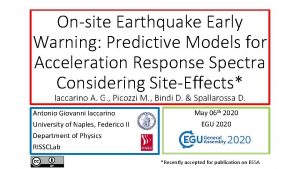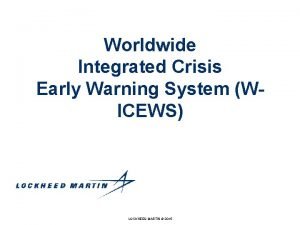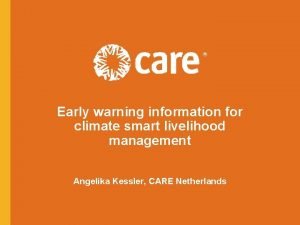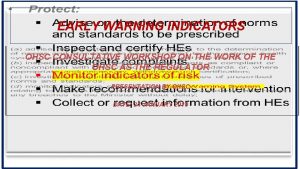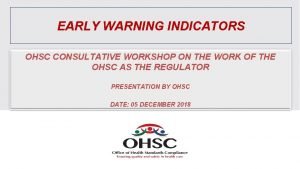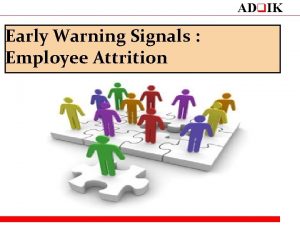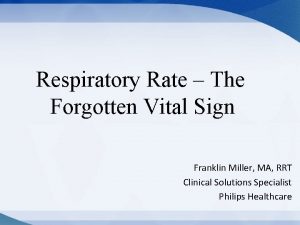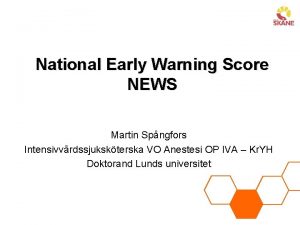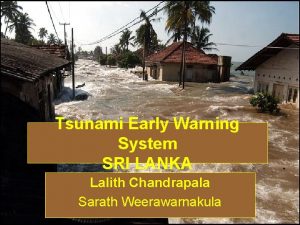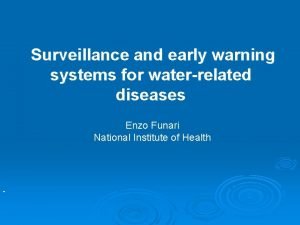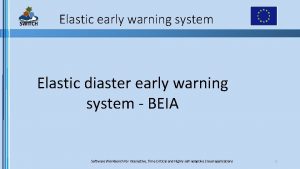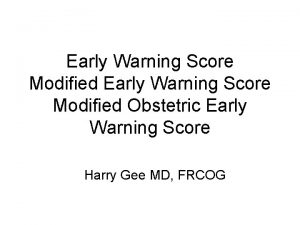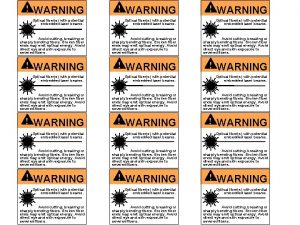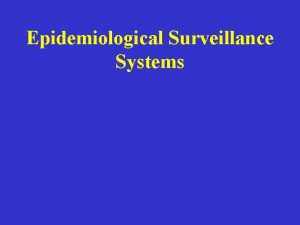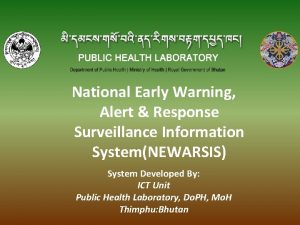Surveillance and early warning systems for climatesensitive diseases
















- Slides: 16

Surveillance and early warning systems for climate-sensitive diseases in Vietnam (2015– 17) Hu Suk Lee Climate Change, Agriculture and Food Security (CCAFS) regional meeting Hanoi, Vietnam 28 November 2018

Outline • Introduction of project • Introduction of field studies • Project achievements

Early warning and forecasting system concept Main objectives • To develop early warning systems of climate-sensitive diseases (CSDs) (prediction/disease models and risk maps) • To conduct epidemiological investigations of CSDs • To support capacity building for public health Decision support tools Notification to farmers Climate Data Zoonotic/livestock diseases - Surveillance Data - Field surveys Responses - Vaccination - Movement control - Quarantine

Introduction of field studies

Sampling areas • Swine urine/sera samples from 5 provinces - Total sample size sera: 1, 959; urine: 1, 920 - 385 samples / province - Slaughter houses - JE, Lepto (sera) and AFM 1(urine) - KAP survey (252 people) • Maize samples from 6 provinces - Total sample size: 2, 370 - 385 samples / province - AFB 1 - KAP survey (551 people) *Sample size (each province): 50% prevalence, 95% CI and precision 5% Except for NIVR

Blood sampling - Slaughterhouses

Maize sampling

Research team

Annual incidence rates for lepto and VE in humans Malaria incidence *Previous study showed that 17~71% of VE were caused by rate JE in Vietnam

Seasonality of VE in humans, 2004– 13 4 -5 times higher than Feb *Previous study showed that 17~71% of VE were caused by JE

Project achievements

Pestforecast (2015– 17) • Research outcomes • 9 international papers (peer-reviewed), 2 papers (under review) and 3 papers (preparing) • Research briefs (3) • 18 conference presentations/posters • 1 book chapter (UNEP: Zoonoses: Blurred lines of emergent disease and ecosystem health) • Pestforecast website https: //pestforecast. wikispaces. com/About+the+project • Training: 2 master students • Capacity building • Vet. epidemiology/GIS training

Capacity building/sharing information

Research contributions and challenges • Evidence-based tools established (RC) - Risk maps, seasonality and climate associated models • One Health research partnership (RC) - A transdisciplinary team • Lack of surveillance systems (C) - Pushed back on the priority list / diagnostic tools • Lack of resources for implementing tools (C) - Less interaction with farmers/small holders (budget issue)

Any Questions? Thank you h. s. lee@cgiar. org

better lives through livestock ilri. org This presentation is licensed for use under the Creative Commons Attribution 4. 0 International Licence.
 Earthquake early warning systems
Earthquake early warning systems Earthquake early warning system japan
Earthquake early warning system japan Early warning intervention and monitoring system
Early warning intervention and monitoring system How much does arimidex increase survival
How much does arimidex increase survival Icews
Icews Early warning system in disaster management
Early warning system in disaster management Ohsc early warning system
Ohsc early warning system Ohsc early warning system
Ohsc early warning system Pews score
Pews score Early warning attrition tracker model
Early warning attrition tracker model Balistic missle
Balistic missle Obstetrics score
Obstetrics score Early warning score
Early warning score Early warning score
Early warning score News vitalparametrar
News vitalparametrar Sri lanka tsunami warning system
Sri lanka tsunami warning system Nec activity schedule example
Nec activity schedule example
